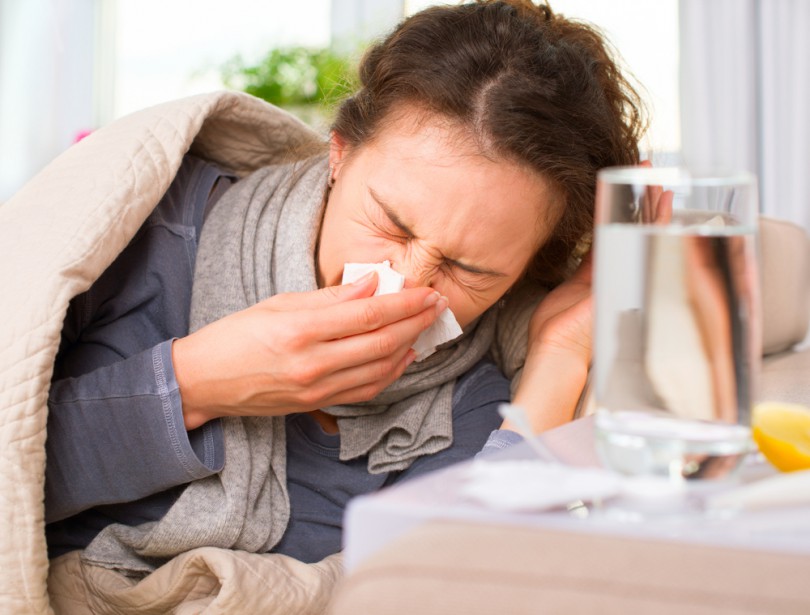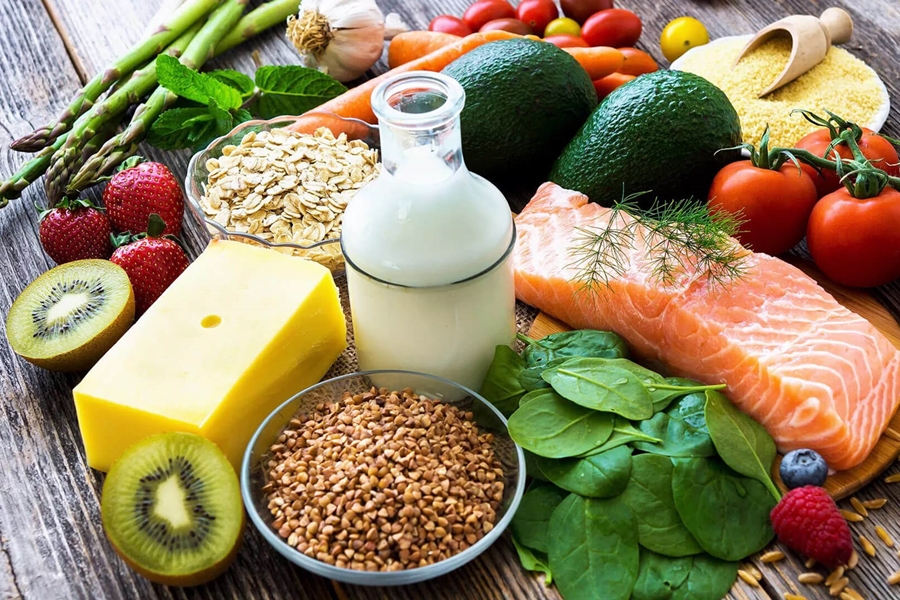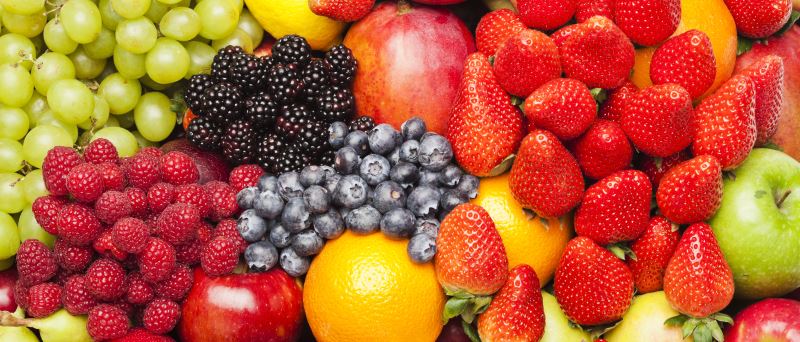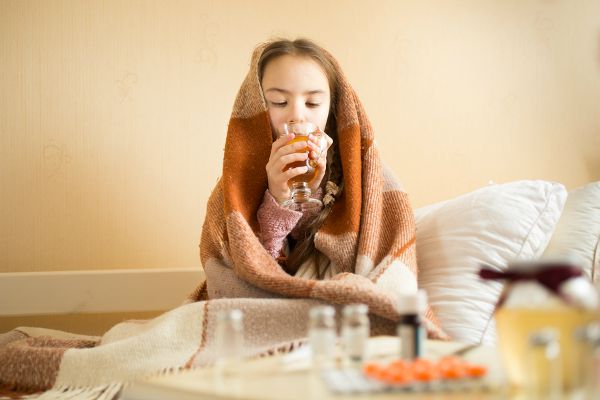For a speedy recovery, it is recommended not only to take medicines, but also to eat right. For this, certain foods are included in the diet, and some are completely discarded. What is the preferred diet for colds? The article will discuss the features of the diet, its benefits, about allowed and prohibited products.
Features of nutrition for colds and flu
At the beginning of the disease, patients should understand that this is not about a diet for weight loss, but about the right diet. It is he who will help to recover faster. After all, the patient’s body is already weakened, therefore, it is prohibited to deprive him of useful substances and vitamins during a period of high fever and other symptoms. Therefore, it is necessary to increase the calorie content of the diet so that all systems and organs function normally. Nutritious and beneficial me during illness becomes the key to a quick recovery.
Doctors say that reducing calorie intake can not only increase the patient's susceptibility to influenza, but also exacerbate its symptoms. In this case, the duration of the disease increases.
In the early days of a cold, when the patient does not leave a high fever, cough and sore throat, we are not talking about good nutrition. Dishes should be light, and when planning a diet, you must listen to your body.

For a comfortable recovery of the body, the following principles of nutrition must be considered:
- plentiful warm drink;
- it is necessary for patients to eat when they want, and not under duress;
- it is recommended to eat fractionally 5-6 times a day;
- dishes should be moderately high-calorie.
When compiling a food menu for colds and temperatures, these features must be taken into account to ensure the patient's quick recovery. Otherwise, food will create an extra load on the patient's body.
Therapist's advice
When a person becomes ill with a cold, his entourage has a desire to feed him. This is one of the mistakes on the way to recovery. The nutritional features of colds and flu include frequent meals in small portions, at least 5-6 times a day.
In the early days of the disease, patients are weakened, and therefore refuse to eat. It is recommended to start here with restoring the water balance.

Dishes prepared during this period must meet the following requirements:
- Food should be easily digestible and high-energy.
- The dishes need the presence of the required amount of protein. Its deficiency leads to a decrease in the formation of digestive enzymes and antibodies. Because of this, the antimicrobial activity of blood serum is weakened.
- Dishes should not be greasy. Use vegetable and butter is necessary in small quantities.
- The right carbohydrates must be present in the food, which does not cause fermentation in the intestines.
- Salt intake should be reduced to 8 grams per day.
- Dishes should be eaten in a warm form (no more than 40 degrees).
- Food should be sparing and fortified.
Such food for colds, coughs and a runny nose will allow the patient to recover faster and avoid complications during the illness.
What to drink?
Without observing the drinking regime, it is impossible to imagine food for colds and a cold. The lack of sufficient water causes dryness of the mucous membranes of the throat and nose, which contributes to the accelerated reproduction of pathogenic microflora. With the necessary intake of fluid, they are restored, which helps to remove microbes.
During the period of the disease, it is recommended to drink:
- warm water with lemon;
- herbal decoctions that have antiviral activity (chamomile, thyme, sage, linden);
- tea with raspberries and currants, which will provide the body with vitamin C;
- fresh and juices without sugar;
- tea or infusion containing ginger and honey;
- antiviral tea containing raspberries, ginger, cinnamon and coriander.

The patient needs to drink often, in small sips and at least 2 liters per day. The fluid to be taken must be warm and free of any colorants or preservatives.
Healthier foods
Soups and broths have a huge nutritional benefit for colds and flu. The most useful of these is chicken. It inhibits blood cells, which are responsible for the onset of inflammation and nasal congestion, as well as sore throat.
For the preparation of meat dishes, it is recommended to use: veal, chicken, rabbit and turkey. It is necessary to cook them for a couple, as well as cook and bake without crusting.
It is recommended to include porridge in the diet: oatmeal, rice and buckwheat. They provide the body with digestible carbohydrates.
Sour-milk products during the common cold improve the intestinal microflora, which increases the body's resistance to viruses. The most useful: kefir, cottage cheese, natural yogurt.

It is allowed to use a few tablespoons of jam from apples, raspberries, currants per day. It contains a high concentration of vitamin C, which strengthens the walls of blood vessels, and inhibits the proliferation of viruses and bacteria. There is also a decrease in inflammation and swelling.
Spices and vegetables that have an antimicrobial effect should be included in food for colds:
- garlic;
- onion;
- horseradish;
- ground black pepper;
- ginger;
- cardamom.
In their healing properties, they exceed even antiviral drugs. They can be consumed in pure form, added to tea.
Garlic deserves special attention. It can be used not only during the period of the disease, but also used for prevention. Even in a minimal amount, garlic begins to act actively and increases the body's resistance.
Signs of a cold are minimized if you take a garlic-honey mixture of 1 teaspoon three times a day.
Vitamins
Food during colds and flu involves the intake of a large number of vitamins that are found in vegetables and fruits.
Vitamin C provides antiviral, anti-inflammatory and protective effects. The main sources of ascorbic acid are:
- currant;
- citrus;
- rosehip;
- sauerkraut;
- sea buckthorn;
- parsley;
- green onions;
- apples.
To enhance immunity, you need vitamin A and beta-carotene. Thanks to him, the formation of protective lymphocyte cells increases. The sources of vitamin A include: liver, chicken yolk, butter, broccoli, dried apricots, pumpkin, carrots and asparagus.

A special role in the nutrition for colds is played by vitamin B2, which is present in cottage cheese and raw eggs. B6 affects the processes of protein metabolism. The patient may receive vitamin with the following products:
- meat;
- beans;
- soybeans;
- buckwheat;
- potatoes;
- offal.
Vitamin E has an antioxidant effect, increasing the flow of oxygen to tissues. Its rich sources include: almonds, peanuts, red fish and sunflower seeds.
The patient’s body is also required vitamin D. It is part of fish oil, red fish, herring and sour cream.
What to exclude from the diet?
From the diet for influenza and the common cold of an adult, it is necessary to exclude:
- Semi-finished products. The more severe the disease, the easier the food should be. Therefore, foods that have an increased load on the digestive tract should be excluded from the diet. Convenience foods and fast foods are poorly digested and create heaviness in the stomach.
- Fried and fatty foods. Such food should be completely excluded from the diet. It contains a lot of fat and carcinogens. Forcing the liver to fight these substances, the body is exposed to an increased load that it does not need during the period of the disease.
- Juices. It is not recommended to drink freshly prepared and purchased drinks with cough and sore throat. With a cold, sour juice can irritate the inflamed mucosa. Because of this, the throat will hurt more, and the healing process will be delayed.
- Alcohol. The medicinal use of such drinks is unacceptable. Alcohol is a diuretic that enhances the dehydration caused by the common cold. In addition, it can speed up digestion, leading to diarrhea.
- Sweet confectionery. Sugar weakens the immune system, which slows down the healing process of the patient. Its particles settle on the mucosa, which contributes to the active growth of microorganisms and increases the risk of complications.
- Hard food. It includes crackers, cucumbers, shortbread dough. They can injure the irritated mucous membrane of the throat and worsen the condition of the patient.
During the illness, fried, salty and spicy foods should not be included in the diet. Due to the ability to irritate the inflamed mucosa and increase its edema.
Sample menu
To achieve a quick recovery, you need to adhere to such an eating regimen for influenza and the common cold for an adult:
| No. | Breakfast | Lunch | Dinner | High tea | Dinner |
| day | buckwheat or oatmeal porridge, tea with lemon and ginger | steamed omelette, raspberry tea | chicken stock or vegetable soup (onions, celery, potatoes, greens, carrots), rice porridge, steamed chicken | dried fruit or baked apple with cottage cheese | steamed fish and broccoli, yogurt |
Diet for influenza is not an independent treatment, but in combination, subject to all the rules and recommendations, enhances the healing process.
Child nutrition
Children are most likely to become infected with a viral infection and therefore get sick several times more often than adults. The reason for this is constant contact with the rest of the children in kindergarten or school.
With a mild course of the disease, special changes in nutrition do not occur. A decrease in appetite occurs with an increase in temperature, above 37.8 degrees, intoxication and other symptoms.
In the first 3 days of illness, the child completely lacks the desire to eat. All his strength goes into the fight against infection, so you should not lose energy on digesting food. Be sure to give your child a drink. The flow of fluid into the children's body is especially important, because due to temperature it is lost in large quantities.

The more a child drinks, the sooner his recovery will come. The volume of fluid should be 1.5-2 liters, depending on its age. With an increase in temperature for each degree, an additional 100-150 ml of liquid is given to the child.
Nutrition for influenza and the common cold for children includes the following products:
- Vegetables and fruits. They are sources of vitamins, minerals and normalize the intestines. Serve vegetables and fruits in baked form, as slices and salads. In order to prevent the development of allergies, it is necessary to dwell on products of green and white-yellow color. Bananas are great for colds. They are high in calories and can also relieve nausea, vomiting and diarrhea. Be sure to include greens and sauerkraut in the diet as a source of vitamin C.
- Dairy products. Yogurt and kefir are quickly absorbed, are nutritious and normalize the intestines.
- You should not force the child to eat meat. It is absorbed worse than plant foods. If the child wanted such a dish, then you can cook steam cutlets. You can cook chicken stock, which helps relieve inflammation.
- Garlic is a stimulant of the immune system. It contains vitamin C, trace elements and volatile. With angina and coughing, a child can be inhaled with garlic vapor. Fresh give 2-3 cloves per day. Sometimes chopped garlic is added to the grated apple.
- Honey. The product strengthens the immune system and body resistance. It has antipyretic and anti-inflammatory properties. Honey enhances perspiration, improves blood circulation in the throat, nasopharynx and nose. Beware of allergies to beekeeping products. Cough and acacia honey have expectorant properties. It reduces cough, has anti-inflammatory and soothing effects.
Food for a child with a cold may include such dishes:
- chicken broth, sauerkraut cabbage soup;
- vegetable stew, mashed potatoes with salad, pasta with stewed vegetables;
- cereals with the addition of butter, honey or dried fruits;
- sandwiches, toasts with tea;
- salad of fresh vegetables (cucumbers, tomatoes, herbs), vinaigrette with sauerkraut and onions;
- fruit jelly, applesauce and baked apples.
Drinks that can be included in the diet:
- herbal teas (with the addition of linden, chamomile, thyme);
- hips of rose hips;
- fruit drinks made from lingonberries, blueberries, red and black currants;
- still water;
- milk with honey.
During the illness period, the menu must include foods containing vitamin C and iron. This strengthens the immune system and speeds up the healing process.
Food after a cold
During the illness, the patient’s body is filled with a large amount of harmful substances and toxins. Medicines also contribute to this. Serious damage is caused to the liver, kidneys and the body as a whole.
To get rid of the consequences of the disease, it is necessary to include in the diet products containing vitamins and minerals.
A delicious and varied menu using vegetables, fruits, greens will quickly restore the body and cleanse it of harmful substances. The presence of protein in the diet is important. Therefore, it should include dishes of fish, chicken and turkey meat. After a cold, you need to eat legumes and mushrooms, which will also have invaluable health benefits.

You can increase the body's resistance with the help of fish oil and iodine, which is found in foods. Thanks to this element, metabolic processes will improve, the nervous and cardiovascular system will be restored. For this, iodized salt is included in the diet.
It is best at this time to abandon:
- all kinds of smoked meats;
- alcohol
- semi-finished products;
- fatty meats.
Due to the fact that the body is weakened after an illness, these products can only worsen the state of health and interfere with rapid recovery.
Conclusion
Nutrition for colds occupies an important place in treatment and provides a speedy recovery. Light and nutritious food, saturated with vitamins and minerals, will allow the patient to quickly cope with the symptoms of the disease and strengthen his immunity. A sufficient amount of fluid will prevent dehydration and remove toxins and other harmful substances from the body.